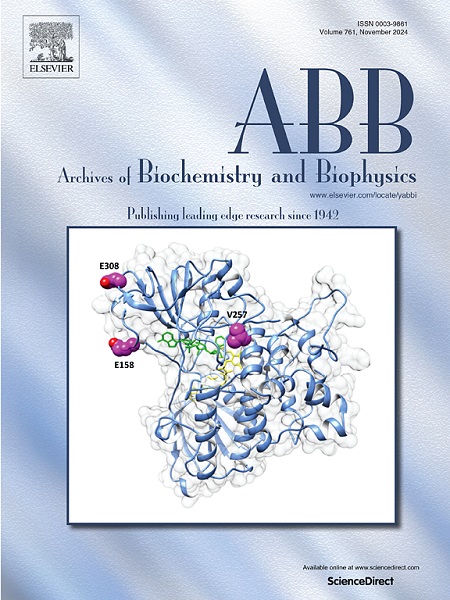Morin hydrate rebalances the miR-34a/Sirt1/HMGB1 pathway and abrogates radiation-induced nephritis via targeting Nrf2-miR-125b axis
IF 3.8
3区 生物学
Q2 BIOCHEMISTRY & MOLECULAR BIOLOGY
引用次数: 0
Abstract
Morin hydrate (MH), a natural substance that lessens cell death, has been shown to have renal protective effects; however, the prospective molecular mechanism behind this response still unclear. The current study aimed to throw more light on the principal mechanism of morin hydrate (MH) in alleviating the acute kidney injury by ionizing radiation (IR) in vivo. Animals were divided into 4groups (Groups: control, (5Gy) irradiated (IRR), (40 mg/kg) MH, and MH + IRR). The results indicated that MH could significantly inhibit kidney damage and restore its structure and function (reduced urea by 55.86 % and creatinine by 55.24 %). In mechanism, MH prevented IR-induced kidney fibrosis and blocked the miR34a and HMGB1/TIMP-2 signaling cascades to effectively inhibit the renal inflammatory response; and prevented IR-induced oxidative stress (OS) by activating the Sirt1/Nrf2/miR-125b signaling axis and stimulating the synthesis of several antioxidant enzymes. MH reduced lipid peroxidation (36.96 %) by reducing the reactive oxygen species (61.9 %) production and rising antioxidant enzymes levels thus hindering inflammatory response and alleviating IR-induced kidney fibrosis. In conclusion, we proposed that MH can prevent radiation-induced nephritis and fibrosis by rebalancing the miR-34a/Sirt1/HMGB1 pathway and targeting Nrf2-miR-125b axis.

求助全文
约1分钟内获得全文
求助全文
来源期刊

Archives of biochemistry and biophysics
生物-生化与分子生物学
CiteScore
7.40
自引率
0.00%
发文量
245
审稿时长
26 days
期刊介绍:
Archives of Biochemistry and Biophysics publishes quality original articles and reviews in the developing areas of biochemistry and biophysics.
Research Areas Include:
• Enzyme and protein structure, function, regulation. Folding, turnover, and post-translational processing
• Biological oxidations, free radical reactions, redox signaling, oxygenases, P450 reactions
• Signal transduction, receptors, membrane transport, intracellular signals. Cellular and integrated metabolism.
 求助内容:
求助内容: 应助结果提醒方式:
应助结果提醒方式:


